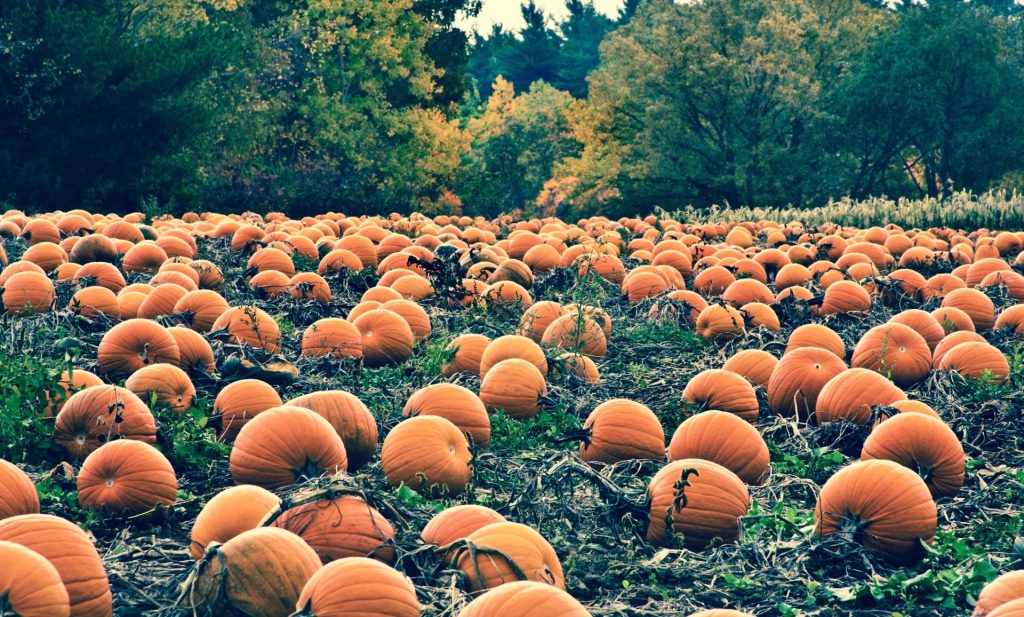
It’s October, and no matter where you may be in Canada, there are pumpkins everywhere. This curious looking cultivar of a squash plant currently lines the produce aisle of your local grocery store. They`re found on the porches of home fronts all over town. While your kids most likely associate the gourd with decorative carving and pumpkin pie, it can be so much more. In fact, it can be used as a platform to teach your children about a food security. So before you head on over to your local pumpkin patch, take note of the following.
4 Ways to Use Pumpkins as Inspiration to Teach Your Kids About Sustainable Food Production
1. Teach Them About the Nutritional Value of the Superfood
The term superfood has no official scientific definition, however it has become a popular idiom for produce items that contain high levels of essential vitamins and minerals. More importantly, it’s a catchy way to get your kids interested in the nutritional value of the great pumpkin.
Bring it up with the enthusiastic assertion “Did you know that pumpkins are a superfood?”. Once you’ve got their attention, you can dive into the details, including the following reported health benefits of the pumpkin:
- One of the best-known sources of beta-carotene (great for the eyes!)
- High in antioxidants
- High in Vitamin A which is important to the formation and maintenance of teeth and bones
- High in Vitamin C
- Powerful source of fibre
2. Food Waste Management
There is one unfortunate side effect to pumpkin popularity in October. It results in a lot of food waste. Break the chain and change this pattern by using the season as inspiration to teach your kids about sustainable food behavior.
If pumpkin innards cannot be used in the home, then look for ways to redistribute it back into the sustainable food system of your community. That may mean making pumpkin pie for your local farmers market or free meal program that accepts baked goods. Alternatively, pumpkin pulp can be used for community garden and urban farm composting or simply frozen for future household use. Whichever the case, this will teach kids that nothing from the pumpkin (or any food item) should go to waste.
3. Pumpkin Seed Preservation
Seed preservation is one of the most important steps towards building a more food secure society. Pumpkins provide a perfect source to teach kids about the concept. The seeds are easy to scoop out, gather, dry, and store. Here’s a straightforward breakdown of the process:
- Kids should use their fingers (more fun!) to separate the seeds from the bulk of the pulp.
- Place the seeds in a strainer and rinse under cool water to remove remaining pulp.
- Once clean, inspect and save large plump seeds as they will have a better chance of germinating and growing healthy vines next season. Compost the ones unfit for storage.
- Spread chosen seeds evenly on a layer of wax paper and dry overnight.
- Once dry (the next day), line a tray with paper towels. Spread the pumpkin seeds evenly so that none overlap.
- Place the tray in a cool, dark place for one month. This will ensure that the seeds sufficiently dry.
- After one month, inspect and sort through the seeds, discarding any that exhibit signs of mold or mildew. Place the healthy seeds in an envelope for storage. You’re now ready for planting next season!
The only hard part about this process will be having enough seeds to store, given that most kids love the taste of dried pumpkin seeds! You’d better get a backup pumpkin, just in case.
4. A Pumpkin Patch Visit as an Outdoor Learning Experience
Outdoor learning experiences are instrumental in the educational development of your child. Community garden and/or urban farm visits are impactful ways to do this. A local pumpkin patch is essentially a farm and getting your kids excited about visiting one is as easy as can be. But instead of making it a one-day a year affair, get in on the ground level earlier in the season so that they can witness the growth of the pumpkin patch through to the harvest. Imagine how invested they will be when they identify a pumpkin that they can take home when the time for harvest has arrived. Perform an online search for an organic pumpkin patch near you and plan your visits accordingly.
Do you have any other ideas about how to use pumpkins to teach kids about food security? We’d love to hear about them! Follow our Foundation on Facebook, Twitter, and/or Google+, find this article on our recently published posts and leave a comment.
Help us celebrate our passions! Our programs create moments of inspiration that can last a lifetime—in classrooms, in school gardens, by farm visits, and other outdoor educational activities. Please visit this link to learn more about our work in Canada. Please sign-up to be a Friend of the Foundation.








